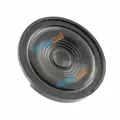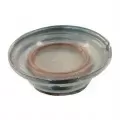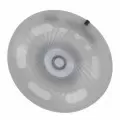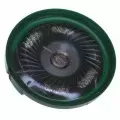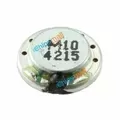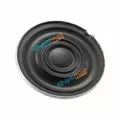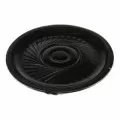OUTLINE:
Speaker Parts Online Shopping: A Comprehensive Guide
 269
269For those who love to listen to music or pay attention to the effect of music, the quality of the speaker plays a crucial role in shaping the overall listening experience, if you can familiarize yourself with the inside of the speaker, and how to buy speaker parts online, you can realize your potential to create a unique speaker. Whether you have a music set at home, you're a bar owner and need a DJ mixer that sounds like a customer's delight, or you just want to upgrade your computer's audio output, this guide to speaker parts is all you need to learn how to debug or build a speaker.
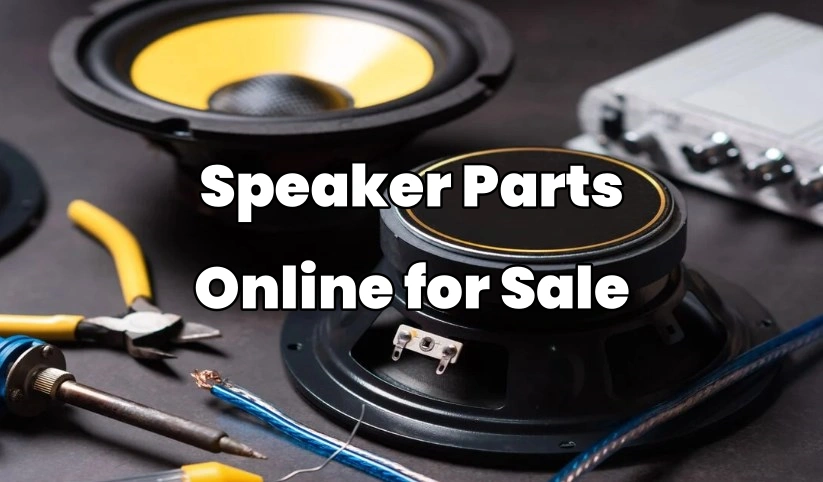
A guide to buying speaker parts online
With the rapid development of technology, online shopping is the preferred way for many people to choose things. If you like a speaker, but it doesn't sell in your country, or needs a part from another country, ordering online is the best option. When you buy speaker parts online, you can compare prices, read reviews, and get personalized after-sales service. There are also disadvantages to buying speaker parts for sale online, for example, there are too many choices for online shopping, which may cloud your judgment, especially for audio novices. This guide is simplified to help you make smart purchases and get the most value.
Classification of speakers
The many varieties of speakers are like tailor-made clothes, with each serving a specific purpose, not only to fulfill the duty of the audio system, but also to ensure that every component of the sound spectrum is presented precisely and balanced. As a result, when picking speaker parts, we may want to first learn what criteria different speakers can be classified under.
Speakers are basically defined by three factors: the transduction principle, the geometry of the diaphragm and radiator, and the application. Speakers are classified into four types based on the transduction principle: dynamic (moving coil), which has a simple structure and a wide range of applications; electromagnetic (moving iron), which has a complex structure but advantages in specific applications; piezoelectric (crystal), which is generally used on special occasions; and electrostatic (capacitive), which has delicate sound quality but is more expensive.
There are four types of diaphragm and radiator shape speakers: cone speakers (with conical diaphragms, which are common and widely used); planar speakers (flat diaphragms, which are useful in specialized applications); dome tweeters (spherical or hemispherical diaphragms, which are frequently used in high-frequency reproduction for clear treble); and horn speakers (which amplify sound through horns and are suitable for long-distance sound projection).
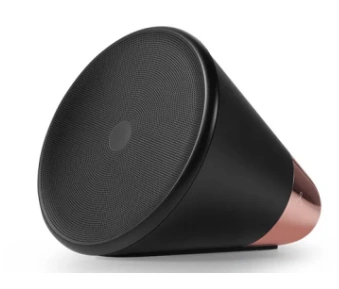
Image Source: GQ
With four different types of speakers—full-range, woofers, midrange, and tweeters—the most fundamental classification is by application. Their names refer to the primary difference between them in the range of audio frequencies they encompass.
Speakers are grouped into several types, each of which serves a unique and entertaining function in a number of application scenarios. Furthermore, the variety of speaker types causes variations in operating principles and internal components. Consumers who completely understand the operation of their speakers can not only achieve optimal audio performance, but also make informed choices of appropriate, cost-effective speaker components.
What are the components of a speaker and how do they work
Knowing sound speaker components is crucial because it affects speaker design. This allows you to intuitively understand the differences between different types of speakers and repair your home speakers or computer audio yourself, saving you money. You can also use speaker components to create a unique speaker. A good speaker manufacturer will spend years and millions of dollars to research and develop a range of speaker models worthy of the manufacturer's logo because the quality of speaker parts supplied by different manufacturers can vary.
The internal components of a speaker mainly include a magnet, voice coil, diaphragm, and centering spider. The magnet creates a magnetic field to provide the necessary magnetic force for the voice coil; the voice coil, located within this magnetic field, moves when an audio current passes through it; the diaphragm, attached to the voice coil, vibrates as a result of the voice coil's movement, thereby producing sound; the centering spider fixes the position of the voice coil to prevent it from deviating.
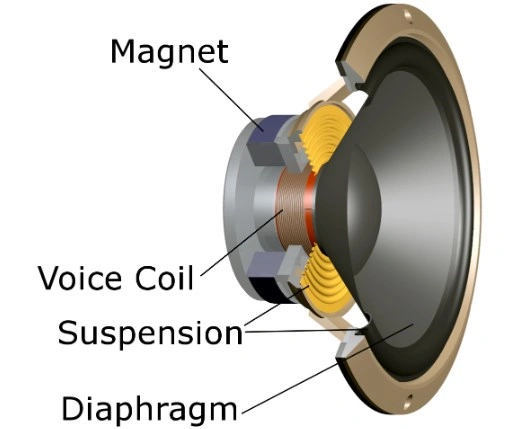
Image Source: Soundguys
When it comes to the working principle of speakers, most websites will use professional words in the introduction, and the expression is also difficult to understand, so I want to use a metaphor to describe how the various parts of the speaker work together. The speaker's individual portions act similarly to a group of friends. Magnet's body has a magnetic field, which "dances" with the voice coil when an electric current travels through it. The diaphragm moves like another energetic dancer in sync with the pulse of the voice coil, and the speaker delivers an incredible sound at this point. In addition, the centering piece protects the voice coil, preventing it from moving out of position. Simply said, a speaker is a magic box that converts electrical data into audible sound. When you play music, the electricity does its magic, bringing these friends to life and allowing us to appreciate the beautiful melody.
How to choose high-quality speakers based on speaker parts
If you want to choose a healthy snack, you should know the ingredients before purchasing it. Similarly, if you want to buy a decent quality speaker, you will most likely assess if the parts used inside the speaker are lasting, safe, and of high quality. I hope these tips on how to buy speakers based on speaker parts are helpful.
The performance and substance of the diaphragm will directly affect the sound quality of the speaker. If you want a high-quality speaker, use a lightweight and rigid material. These materials should be resistant to temperature and humidity variations, allowing the diaphragm to create enough sound pressure when vibrating while remaining stable. Of all, relying merely on the diaphragm does not guarantee that the speaker will generate excellent sound. A complete speaker also requires suspension, which is a crucial component that connects the diaphragm to the frame. Materials with strong elasticity and stability, such as natural rubber, should be utilized because their job is to prevent the diaphragm from deviating in any direction during vibration.
Finally, the key components of the speaker also include the centering spider, which can be guessed why this speaker component is a key part from the name “centering spider” . The centering spider can precisely fix the voice coil in the center of the magnet gap, preventing the voice coil from shifting during vibration, so as to ensure that the speaker emits stable and clear sound quality. Because the centering spider affects the sound quality of the speaker output, if you are very concerned about the sound quality of a speaker, then you need to pay attention to what materials are used in the centering spider used inside the speaker you want to buy. Good centering spiders usually choose a material with excellent stability and support, such as cotton. If the materials used in the internal parts of the speaker you want to choose meet the above requirements, then congratulations, you have successfully selected a good speaker.
Apart from paying attention to the main points of the speaker, you need also take into account the quality of other elements as, ultimately, whether a snack is worth purchasing depends on its production date, manufacturing location, and other elements. Consequently, we can also grasp how different areas of the speaker influence its sound quality.
Examining the working concept of the internal components of the speaker discussed in this tutorial, we can discover that, while selecting a speaker, we should also consider the magnet. The vibration efficiency and sound quality of the voice coil are exactly correlated with the magnetic strength and quality of the magnet. Selection of magnets with magnetic stability and modest strength will help you acquire the optimum sound quality.
The efficiency and sound quality of the speaker depend much on the quality of the voice coil, a fundamental part of transforming electrical energy into mechanical energy and generating diaphragm vibration. Thus, while selecting a voice coil, items with great electrical conductivity, high temperature resistance and wear resistance should be given top priority to guarantee that the speaker can sustain outstanding performance under high intensity use.
Lastly, although many people would overlook this item as well, the dust cover is mostly needed to stop foreign things from getting inside the speaker, so the material with good sealing and durability should be chosen. The dust cap design is categorized into two types: concave and convex. Each shape has a distinct impact on the resonance frequency of the speaker. Hence, users should opt for the suitable dust cap form based on the precise frequency range of the speaker.
Some people choose a good speaker based on the quality of the parts, but many people also think about other things that affect the buy. As an example, some customers will look at the image of big speaker brands or companies that sell speaker parts. This is because a well-known brand not only promises good quality, but also great service after the sale. If you are someone who gets speakers or parts for speakers online, you will be able to find online shopping sites set up by different sellers or suppliers if you search for keywords related to speakers.
How to buy good quality speaker parts at a good price?
Buying a set of good quality speakers is not a problem for speaker enthusiasts, but how to buy a set of excellent sound quality and cost-effective speakers at a low price is a difficult task, especially when online shopping allows consumers to choose from a large number of products, making it difficult to meet all of their speaker equipment or speaker parts needs. As a result, this section provides consumers with basic information on purchasing speakers or speaker parts online, with the goal of assisting you in selecting a set of high-quality, low-cost speakers in front of the screen.
It is reasonable to assume that a significant number of individuals will compile a purchasing list prior to visiting the supermarket in order to prevent the uncertainty of what to purchase. In the same vein, customers should be apprised of their unique shopping needs prior to purchasing speaker apparatus or speaker parts. You may contemplate whether you prefer a precise treble experience or a robust bass impression. Alternatively, do you require a sound field that is balanced? This phase enables you to filter in conjunction with the speaker classification that was previously described. Subsequently, it is imperative to establish a financial limit. It is beneficial to consider the lowest and maximum prices that you are willing to accept in order to prevent overspending.
Following the creation of a purchasing list, it is possible to conduct an online search for speaker equipment sellers or speaker parts providers. Additionally, it is possible to generate a form or piece of paper to document the information gathered during the search. This information encompasses the reputation of the products of the major brands, the use of other consumers, the maintenance services of the products, the prices and discounts of various purchase channels, and so forth. I also suggest that you view professional inspection videos related to speaker equipment or parts, in addition to utilising their own ability to retrieve information. This phase is essential because it evaluates the quality of the products in addition to their price.
At last, if you are ready to buy and have done enough comparison research, don't hesitate to order. Of course, if allowed, I would want everyone to be able to purchase a device that provides a return or exchange as online music via speakers could not be exactly what you find offline.
Frequently Asked Questions (FAQs)
Which parts affect the sound quality of the speaker?
A: The sound quality of a loudspeaker depends on several important factors. Among these, the diaphragm is a crucial element regulating the sound's purity and reaction speed; different diaphragm materials will generate varying timbre qualities. A component that converts electrical information into mechanical vibrations is the voice coil; its design and quality directly affect the sound volume. Moreover, the strength of the magnet will affect the strength of the sound and if the speaker has a strong bass entirely. You should take into account the material and performance standards of these parts while selecting loudspeakers.
Are used speakers worth buying? How to choose?
A: In some situations, particularly for audio aficionados seeking a vintage style or a particular brand model, buying used speakers can be a wise decision. Still, purchasing old speakers calls for some care. If you are sure to buy secondhand speakers, you can concentrate on inspecting the functional integrity, examining the look of wear and tear, asking the source and use, and referring to the market pricing to ensure that the transaction is appropriate after stating the demands and budget. Think about fit with other audio equipment and, if at all possible, try live to evaluate sound quality. This can help you to locate more reasonably priced, precisely correct used speakers.
What do I need to pay attention to when buying speaker parts online?
A: When purchasing speaker components online, you should consider the following factors. The first step is to identify your purchase requirements. Do you want to buy from a website that specializesspecialize in selling speaker components, or are you willing to accept a website that sells both speaker equipment and parts? Clear your needs and select a trusted seller or platform to verify that the source of the purchased products is trustworthy. The second step, if you already have a preferred product, make sure you understand the specifications of the speaker part and carefully read the seller's description to avoid purchasing the wrong part. You can also refer to the comments of other sellers to see if they can use this part after purchase. Finally, after receiving the goods, there must be timely acceptance to guarantee that the acquired parts satisfy their specifications.
The End
Understanding loudspeakersloudspeaker and making an speaker part online purchase shows that purchasing the desired, high-quality, low-cost loudspeaker equipment or loudspeaker parts is not out of reach. Understanding the parts and working principles of the speaker, which models of the speaker, creating a demand list when shopping, and carefully comparing the prices of different channels will allow us to not only more accurately identify which products can truly meet our auditory needs, but also make wise choices in the dazzling market. Finally, we hope that every music fan will discover their own purity and inspiration in this aural realm of limitless possibilities, thereby improving their quality of life.

Disclaimer: The views and opinions expressed by individual authors or forum participants on this website do not represent the views and opinions of Chipsmall, nor do they represent Chipsmall's official policy.

share this blog to:


